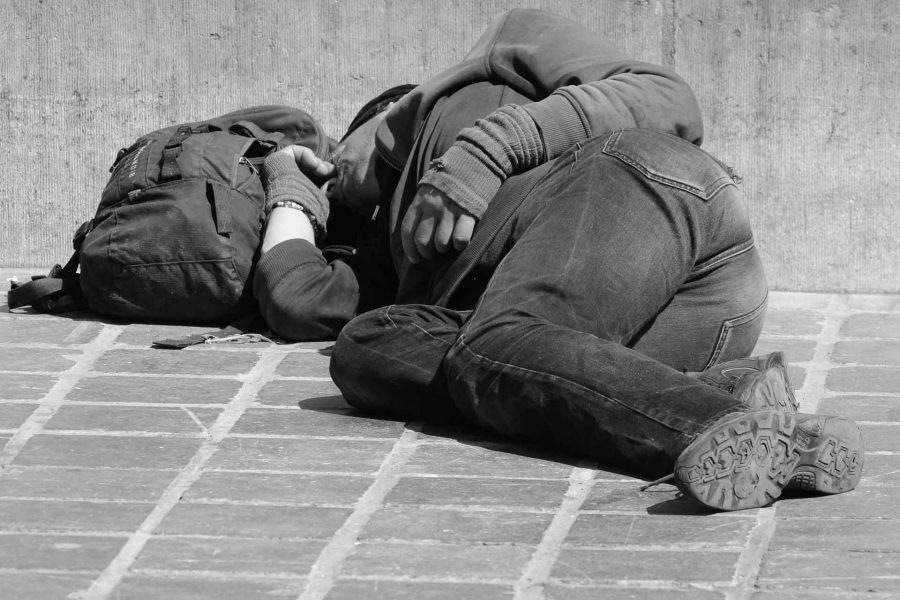EVERY hour and a half someone presents as homeless,” a North Wales council was told. Cyngor Gwynedd’s cabinet heard the region now had 652 homeless people on its books.
The county had seen an “astonishing” rise in homelessness. The shocking figures were presented during a housing report presented by cabinet member for housing, councillor Craig ab Iago.
He described how “pressure” on the housing department’s homelessness service had “increased massively.” There were now 36 children in bed and breakfast accommodation and 62 children in temporary housing.
His report also revealed 6,997 children in Gwynedd were now classed as “living in poverty” – around 34.4% of the population of young people.
More than 3,000 people were on the waiting list for social housing, and 65% of Gwynedd residents, in 2020 could not afford to buy a home. Cllr ab Iago said more than 40% of the region’s housing stock on the market in 2019 went to second home buyers and around 15% of the housing stock was “used as bolt holes or investment properties – rather than homes”.
The average house price in Gwynedd was now £244,000 but with average wages at £30,000, a house was now eight times the annual wage, and mortgages and homes were unaffordable to many. The average rent was £700 – “If indeed you can even find a property to rent.” he added.
The housing report also noted that between the 2019-20 and 2021-22 financial year there had been an increase of 48% in homelessness presentations and an 186% increase in the numbers staying in temporary accommodation. It was anticipated that the data for 2022-23 would remain high.
“We are living in the midst of a real housing crisis” Cllr ab Iago said.
The report also highlighted causes of homelessness, which included the impact of second homes and holiday let properties, the pandemic, legislative changes over homelessness support entitlement, the end of the Welsh Government’s Hardship Fund, rising prices and the cost-of-living crisis and landlord decisions to end tenancies to move into more profitable markets.
Using a video Cllr ab Iago also described a raft of “positive efforts” that were underway in the council’s housing action plan to address the issues. During the meeting the cabinet agreed, to approve financial support to elements of the action plan
It also agreed amendments to the original business case for borrowing, to buy houses-to-let to local residents, approved by the Cabinet at its meeting on February 16, 2021, and by using £5.6m of the council tax premium.
The decision was needed as no formal decision had been made on how to use additional finance created from the council tax premiums on second homes and long-term empty dwellings.
The decision to increase the premium from 50% to 100%, went operational from April, 2022. At its meeting in December 2020, the Cabinet had approved the Housing Action Plan 2020/21-2026/27, which then had included 33 projects across five fields to provide homes.
But the scheme was originally based on income from the council tax premium at its original rate of 50%. The doubling of the premium meant around £20m of additional finance was now available over the plan’s seven year lifespan.
The HAP has been running for two years and was “making good progress.” A Buy to Let Scheme had seen eight houses purchased and there was potential for up to 32 individuals to benefit.
The Homebuy Scheme, launched in September 2022, has seen “considerable interest” with four families having completed a purchase, 15 applications approved and another six in process.
An empty housing scheme had seen 104 empty houses come back into use. Since it launched, 173 social houses had been built across Gwynedd, with a budget of £9.4m (2021/22), £12.3m (2022/23) and £13.5m (2023/24).
But since the Housing Action Plan was launched originally in April 2021, there has been substantial inflation in construction costs and labour and materials costs such as timber, steel, cement. A total of 88 were currently under construction (since April 2021) and another 113 will start in the coming year.
To achieve the plan’s original ambition to buy 100 houses, there was a need to consider funding the scheme through borrowing and keeping the market conditions “under constant consideration.”
It also recommended closing financial deficit by using the Council Tax Premium by borrowing £13.7m and a contribution of £5.6m from the Premium Fund. The Department had also collaborated with Betsi Cadwaladr University Health Board to establish provision to support individuals at risk of becoming homeless due to mental health issues.
The HAP scheme would also request £80k of the council premium fund to contribute towards the scheme over the next two years.


















